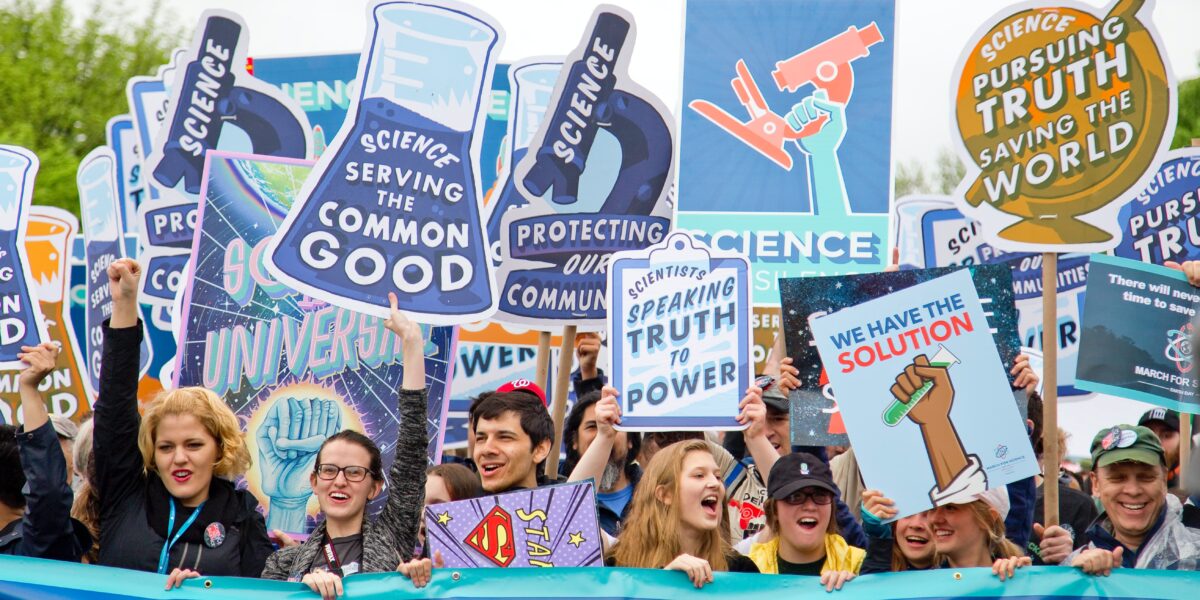In my opening blog of 2021, I laid out the task list for ocean conservation in 2021. That list began with including everyone equitably. Of course, it is a goal of all of our work all of the time, and was the focus of my first blog of the year. The second item focused on the concept that “Marine science is real.” This is the first of a two-part blog on the subject.
Marine science is real, and we have to back it with action. That means training new scientists, enabling scientists to participate in scientific and other knowledge sharing no matter where they live and work, and using the data and conclusions to inform policies that protect and support all ocean life.
Earlier this year, I was interviewed by a 4th grade girl from Venable Village Elementary School in Killeen, Texas for a class project. She had chosen the world’s smallest porpoise as the ocean animal to focus on for her project. The vaquita is limited in range to a small part of the northern Gulf of California in Mexican waters. It was hard to talk to such an enthusiastic, well-prepared student about the vaquita population’s dire straits—it is unlikely there will be any left by the time she enters high school. And as I told her, that breaks my heart.
At the same time, that conversation and others I have had with young students over the past two months buoy my spirits as they always have throughout my career. The youngest are at the forefront of learning about marine animals, often their first look at marine science. The older students are looking at ways that they can continue to pursue their interests in ocean science as they complete their college educations and move into their first careers. The young professional scientists are eager to add new skills to their arsenal of tools to understand their home ocean waters.
Here at The Ocean Foundation, we have been working to deploy the best science on behalf of the ocean since our founding. We have helped set up marine labs in remote places, including Laguna San Ignacio and Santa Rosalia, in Baja California Sur, and on the island of Vieques in Puerto Rico, to fill important gaps in information. In Mexico, the work has focused on whales and squid and other migratory species. In Vieques, it was on marine toxicology.
For nearly two decades, we have worked with marine institutes in more than a dozen countries, including Cuba and Mauritius. And last month, at the first ever all-TOF conference, we heard from scientists and educators all over the world who are connecting the dots on behalf of a healthy ocean and future marine conservation scientists.
Marine scientists have long known that the apex predators of the ocean play a vital role in the overall equilibrium of natural systems. Shark Advocates International was founded by Dr. Sonja Fordham in 2010 to both call attention to the plight of sharks and identify policy and regulatory measures that could improve their chances of survival. In early February, Dr. Fordham was interviewed for various media outlets as a co-author of a new peer-reviewed paper on the status of sharks worldwide, which was published in Nature. Dr. Fordham also co-authored a new report on the sad status of sawfish, one of many little understood ocean species.
“Because of decades of steadily increasing attention to sawfish from scientists and conservationists, public understanding and appreciation is way up. In too many places, however, we’re running out of time to save them,” she said in a recent interview, “With new scientific and policy tools, the opportunities to turn the tide for sawfish are better than ever yet fleeting. We’ve highlighted the actions that can bring these extraordinary animals back from the brink. We mainly just need governments to step up, before it’s too late.”
The Ocean Foundation community also hosts Friends of Havenworth Coastal Conservation, an organization led by Tonya Wiley who is also deeply devoted to the conservation of sawfish, especially the unique Florida sawfish that plies the waters of the Gulf of Mexico. Like Dr. Fordham, Ms. Wiley is making the connections between the science we need to understand the life cycles of marine animals, the science we need to understand their status in the wild, and the policies that we need to restore abundance—even as they also seek to educate scientists, policymakers, and the general public about these extraordinary creatures.
Other projects such as Seven Seas Media and World Ocean Day strive to help make marine science vivid and compelling, and connect it to individual action.
At the Inaugural Conference, Frances Kinney Lang talked about Ocean Connectors the program she founded to help young students connect to the sea. Today, her team runs programs that connect students in Nayarit, Mexico with students in San Diego, California, USA. Together, they learn about the species that they have in common through migration—and thus better understand the interconnections of the ocean. Her students tend to have had little education about the Pacific Ocean and its wonders despite living less than 50 miles from its shores. Her hope is to help these students stay engaged in marine science all of their lives. Even if they do not all go on in the marine sciences, each of these participants will carry a special understanding of their relationship to the sea throughout their working years.
Whether it is changing ocean temperature, chemistry, and depth, or other effects of human activities on the ocean and the life within, we need to do everything we can to understand the creatures of the ocean and what we can do to support balanced abundance. Science underpins that goal and our actions.







